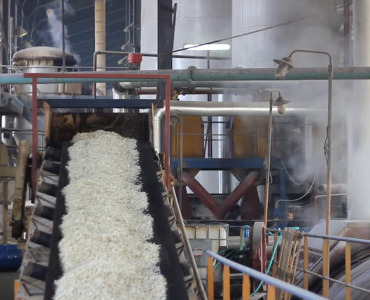Maximizar Rendimientos Y Minimizar Costos: Estrategias Avanzadas Para La Optimización Química Del Procesamiento De Azúcar De Caña
In the world of walking stick sugar processing, the quest of making the most of yields while concurrently reducing costs stands as a formidable obstacle that calls for a critical mix of sophisticated chemical optimization methods. In the middle of this complex internet of methods lies the assurance of opening untapped capacity and reinventing the extremely significance of sugar manufacturing.
Chemical Evaluation for Performance
Chemical evaluation plays an essential role in enhancing the performance of sugar walking stick processing by giving critical understandings into the make-up and properties of the raw products. By conducting in-depth chemical analyses on sugar cane examples, processors can establish the exact concentrations of sucrose, sugar, fructose, and other parts present in the raw product. This info is crucial for enhancing the numerous stages of the sugar walking cane processing chain, from crushing to condensation.
Moreover, chemical analysis makes it possible for processors to identify contaminations such as organic acids, healthy proteins, and minerals that can influence the high quality and return of the final sugar item. By quantifying these pollutants, cpus can carry out targeted strategies to remove or minimize their impacts, inevitably improving the general performance of the processing plant.
Additionally, chemical evaluation helps with the tracking of procedure parameters such as pH, temperature, and thickness, permitting processors to make real-time adjustments to make sure optimal problems for sugar removal and condensation. On the whole, a detailed understanding of the chemical structure of sugar walking cane is important for making best use of returns, reducing costs, and preserving high item top quality in the sugar manufacturing sector.

Enzyme Utilization for Enhanced Returns
With a strategic technique to enzyme application, sugar walking stick cpus can significantly improve their yields while keeping operational efficiency in the manufacturing procedure. Enzymes play an essential function in sugar walking stick handling by damaging down complex carbs into less complex sugars, thus boosting the overall sugar extraction efficiency. By integrating specific enzymes customized to target the various components of sugar walking cane, such as cellulose and hemicellulose, cpus can improve the release of sugars throughout extraction.
Enzyme application offers the advantage of maximizing sugar yields from the raw material while reducing the energy and resources required for processing. This results in a more sustainable and affordable production process. Additionally, enzymes can aid in decreasing handling time and boosting the total top quality of the sugar item. With cautious choice and application of enzymes, sugar walking stick processors can optimize their operations to accomplish higher yields and profitability.
Ph Control for Optimal Processing
Enzyme application for raised returns in sugar walking cane processing lays the structure for attending to the critical facet of pH control for optimum handling performance. Keeping the appropriate pH degree throughout different phases of sugar walking cane handling is essential for maximizing returns and lessening costs. By meticulously keeping track of and changing the pH levels at different handling actions, sugar walking stick processors can enhance sugar recuperation rates, minimize chemical usage, and maximize the overall manufacturing procedure.
Advanced Filtration Strategies
Carrying out innovative browse around here filtration strategies in sugar walking cane processing enhances the effectiveness and pureness of the last product with improved splitting up methods. By integrating cutting-edge filtering innovations, such as membrane layer filtering and activated carbon purification, sugar walking cane processing plants can achieve greater levels of sugar recuperation and enhanced top quality control.

Turned on carbon purification is an additional sophisticated method that helps in the elimination of colorants, off-flavors, and residual impurities from sugar walking cane items. By utilizing triggered carbon's adsorption residential or commercial properties, this filtration technique boosts the clearness and preference of the sugar, fulfilling the high requirements demanded by customers and industry policies.
Energy-Efficient Purification Techniques
Energy-efficient distillation methods are necessary for maximizing the sugar cane handling sector's power consumption while preserving top quality item criteria. his response Traditional purification processes can be energy-intensive, resulting in higher manufacturing costs and ecological impacts (Cane Sugar Processing Chemicals). Implementing energy-efficient purification techniques, such as vacuum cleaner distillation or molecular purification, can significantly reduce power needs while improving general find more information procedure efficiency
Vacuum cleaner distillation involves decreasing the stress within the distillation system, which lowers the boiling factor of the liquid combination being refined. This decrease in boiling factor decreases the power needed for evaporation, resulting in power financial savings contrasted to conventional purification techniques.
On the other hand, molecular purification makes use of brief path purification strategies under high vacuum problems to different compounds based on their molecular weight. This approach is especially reliable for heat-sensitive materials, as it runs at reduced temperature levels, minimizing power intake and preserving item quality.
Conclusion
